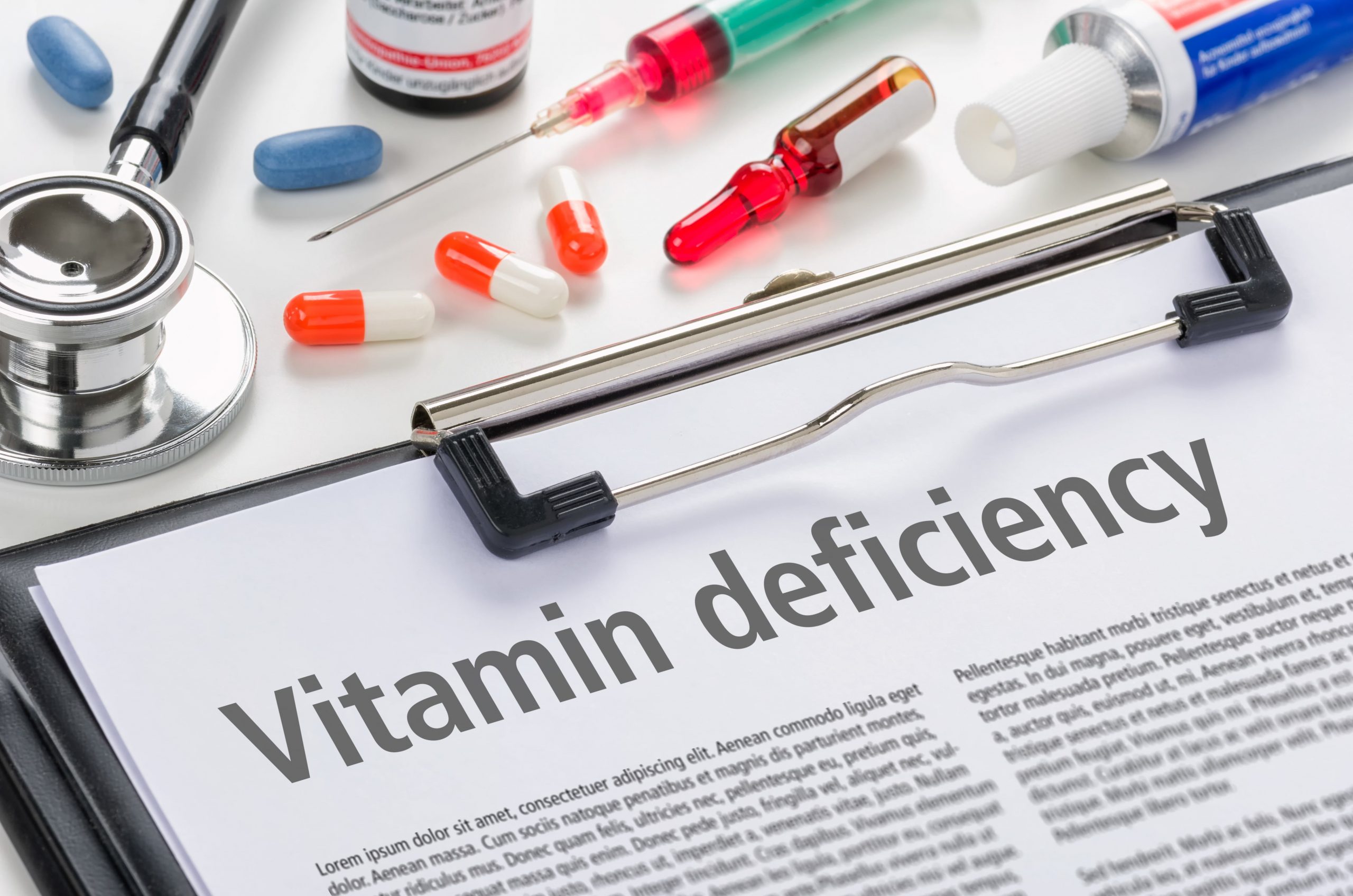Vitamin and nutrient deficiencies commonly affect people who do not take a balanced diet or with different underlying conditions that render them vulnerable.
A balanced diet helps the body satisfy its needs for various minerals like iron, copper, calcium, and magnesium, and the essential vitamins, including A, B, C, D, E, and K. In fact, 2019 WHO report pointed that more than half the world’s population is deficient of a particular mineral or vitamin. Telling vitamin and mineral deficiencies can be easy or difficult, depending on the type of deficiency. This article shares the common signs and symptoms of such deficiencies. In case of any of these, quick medical and dietary intervention is needed.
a. Shortness of breath
Falling shortness of breath is a common symptom of vitamin and mineral deficiency that should not be ignored. In one study, more than 80& of people with iron deficiency anemia experienced shortness of breath. This happened after a simple task, like climbing the stairs, which shouldn’t typically tire a healthy person and deprive him of breath. Ulcers, pregnancy, prolonged menstrual periods, and an iron-deficient diet are the main causes of iron deficiency. In some instances, vitamin D deficiency can also lead to shortness of breath and difficulty in breathing.
b. Weakening of bones, teeth, and muscle
Strong bones and muscles are often linked to enough amounts of calcium and potassium minerals and proteins. In the event that the body becomes deficient in any of these, the bones, teeth, and muscles will likely become weak. The same problem can also be caused by vitamin D deficiency, whose main source is sunlight. In fact, people with osteoporosis, osteoarthritis, and related diseases are often vitamin deficient, as indicated by one recent study. Besides, vitamin D deficiency may interfere with fetal development, making pregnant women give birth to underdeveloped and weak children.
c. Mouth lesions and sores
Mouth lesions and sores are common problems caused by iron or vitamin deficiency. One study showed that iron deficiency predisposed one to having canker sores or cracked mouth, and the probability was twice as much as all other factors combined. Besides, vitamin B (B1, B2, and B6) deficiency could also lead to cracking mouth and lips. The condition characterized by the cracking or bleeding, or reddening of the mouth corner is called angular cheilitis and can be caused by vitamin B2 or iron deficiency.
d. Poor vision
If you had good eyesight and would see in darkness or light without any problem, then suddenly you start having visual problems, chances of being vitamin deficient could be high. For the eyes to see in darkness, the retina must have enough rhodopsin, the compound in the retina which enables one to see in darkness. Yet, without vitamin A, rhodopsin cannot be produced. Consequently, poor eyesight signifies vitamin deficiency. The visual problem can escalate to xerophthalmia and cause permanent blindness. However, the situation can be countered by taking vitamin A-rich foods, including organ meat, yellow/red-colored foods, leafy greens, and fish.
e. Scaly patches and dandruff
In most developing countries (and some developed countries), you will see infants below 3 months and adolescents having scaly patches (seborrheic dermatitis) and dandruff. Dandruff refers to the patches on the scalp, but when they extend to the chest, groin, face, and armpits, they are called seborrheic dermatitis. These skin conditions have many factors, including a poor diet which causes deficiencies. For instance, vitamin B2, B3 & B6, and zinc deficiencies often cause patches and dandruff. Admittedly, no study has established the link between the conditions and the deficiencies, but taking foods rich in the mentioned vitamins and mineral helps improve the situation.
f. Red or white skin bumps
You might have noticed young children and adults who have red or white goose-bump-like conditions, and sometimes ingrown hair also appears with them. This is known as keratosis pilaris, whose main cause has not been determined until today. However, most studies associate it with excess keratin production, which often leads to the red and white bumps on young people’s skin and may disappear as one approaches adulthood. Although keratosis is more genetic and is passed from a parent to offspring, it is also linked to vitamin A and C deficiencies. Therefore, apart from applying the creams, one may try vitamin A or C-rich foods, and the condition may improve. Such foods include fruits, leafy greens, meat, eggs, and fish.
g. Restless leg syndrome (RLS)
Willis-Ekbom disease, otherwise called the restless leg syndrome, denotes a nerve condition in which one experiences an irresistible urge to move his legs. Besides, a person with RLS often finds the legs having anormal sensations which worsen as he rests or tries to sleep. This neurological disorder affects up to 10% of the world’s population, with women being the main victims, with a 67% likelihood. Like many other conditions, the disease’s causes are not understood, although common among people with iron deficiency. This explains why pregnant women whose iron levels often drop mostly suffer from the disease. Iron supplementation can help, especially in high amounts. Therefore, eating iron-rich foods such as nuts, seeds, leafy greens, and organ meat may help improve the disease’s symptoms.
h. Hair loss
Many people experience hair loss, and the percentage is as high as 50% of adults by the time they hit 50years. The problem has diverse causes, including vitamin B3 & B7, linoleic & alpha-linolenic acid, zinc, and iron deficiencies. Iron is necessary for DNA synthesis, including the hair follicle DNA, while zinc helps the cells synthesize and multiply. Besides, vitamins B3 and 7 deficiencies are often characterized by hair loss. By increasing your intake of the mentioned vitamins and minerals, you can ward off slow hair loss.
Conclusion
Vitamin and mineral deficiencies are common in developed and developed countries. Knowing the symptoms of such problems helps one seek medical and dietary intervention. The signs and symptoms include hair loss, restless leg syndrome, fatigue, shortness of breath, dandruff, and seborrheic dermatitis. Besides dietary supplementation, increasing your intake of particular nutrient-rich foods helps improve the symptoms.
- FDC – Giejo Magazine Article - July 29, 2023
- MoriMa Tea the – Chinese tea culture - April 26, 2023
- Missionary Position – Least Likely To Bring You To Climax - April 7, 2023









